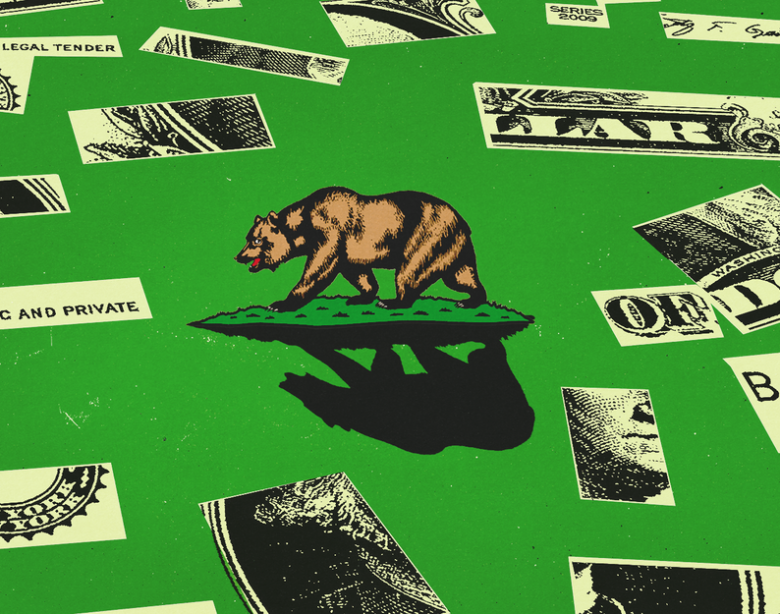[ad_1]
California’s new minimum wage law It didn’t even go into effect before a disaster was declared. Business groups and Republican politicians have argued for decades that raising the minimum wage harms the workers they are supposed to help. And this passed in September 2023 and appears to have set a minimum salary cap of $20 an hour for fast food workers. No different news headlines such as “California Restaurants Lay Off as Fast Food Wages Soar.” and “California’s minimum wage issue is a concern for the nation” is widespread.
The story seems to fit a familiar theme: naïve California progressives reach too far and create predictable failures. “I’m going to give you a disadvantage,” Donald Trump respond When asked if he would agree to a federal minimum wage increase during his second term, “In California They increased in numbers to very high numbers. And your restaurants everywhere are closed. The population is shrinking It is very detrimental.”
Except that it doesn’t. Since California’s new minimum wage went into effect in April, The state’s fast food sector is also in effect. receive jobs, and doing so faster than in other parts of the country. If anything, it proves that the minimum wage can be raised higher than experts previously believed without harming employment. That should be good news. The policy was viewed as a major failure. That’s a testament to how quickly economic misinformation can spread. And how difficult it is to fight it immediately.
Among economists The minimum wage has long been viewed as disproven by simple mathematics. In theory, if each worker becomes more expensive due to higher wages, Employers will not be able to hire many people.
Economists then began to analyze what actually happened when the minimum wage was raised. Since the early 1990s, economists have conducted more than 500 studies of minimum wage increases across the country. “Many studies conducted over the past 30 years suggest that the minimum wage’s impact on jobs is relatively small,” said Arindrajit Dube, an economist at the University of Massachusetts Amherst. which has carry out Many items What does a meta-analysis of the minimum wage literature tell me? “Sometimes it really has an effect. higher employment.”
The main explanation is that when the minimum wage goes up. Low-wage jobs are also becoming more attractive to workers. which responds by staying in those jobs longer Lower turnover means that companies Less time is required to recruit and train new employees. And employees themselves are more productive and less prone to errors. all of which reduce Employer’s wages Businesses typically absorb some of the costs through lower profit margins or pass them on to consumers in the form of higher prices. (a point I will return to later)
Still, economists debate how high the minimum wage can be before it becomes a barrier to employment. Not more than a decade ago believe Raising the minimum wage to $15 an hour would lead to jobs. Only “significantly reduced” is like that. proven Wrong. Then, in September 2023, California passed AB 1228, which will raise the hourly wages of fast food workers statewide from $16 to $20, a bigger increase than any other. who have studied a lot (The new law applies only to employees of chains with more than 60 branches nationwide.)
The state’s fast food industry immediately erupted in protest. Before the law took effect in April, owners of hundreds of Pizza Hut restaurants announce They will be forced to lay off all 1,200 delivery drivers from 140 Burger King franchise owners. claim He will have to reduce employee hours and expedite the rollout of self-service kiosks for Rubio’s, a regional Mexican food chain. Announced will close 48 stores, citing “increased costs of doing business in California” (coverage of this announcement generally cuts fact The company’s biggest cost appears to be debt repayment. (This has increased since the company was acquired by a private equity firm in 2010.)
Opposition increased as the law came into effect. In June, the California Business and Industrial Alliance published a full page advert in USA today It announced that state fast food businesses had cut nearly 10,000 jobs in anticipation of the new law. Similar claims began to appear in right wing medialocal newspaperand national level business The media blames the new minimum wage law for mass layoffs and restaurant closures.
However, that narrative is based on a statistical illusion. The number of 10,000 jobs originated in a Hoover Institute article. which is a free market-focused think tank which analyzed raw employment data from September 2023 through the end of the year, but as an anonymous blogger, Invictus and Los Angeles Times Columnist Michael Hiltzik has point leave,Fast food industry always Off work during the fall and winter Simply because people are going out to eat less. (Then those jobs will be returned during the spring and summer when demand recovers) according to employment figures “seasonally adjusted” which is considered more reliable Because these numbers are the cause of these ups and downs, California’s fast food industry receive more than 5,000 jobs were lost during that time period.
Hoover Institution, finally retract The original post admits an error. But that didn’t end the matter. In September 2024, the industry Press release refer to new numbers which this time adjusted according to the season It appears the state’s fast food sector has lost thousands of jobs since the start of the year. Because of the new minimum wage Meanwhile, neighboring states like Oregon and Nevada gained new jobs. resulting in a second wave of press negative–
Once again, statistics are misleading. This time they cam From the Employment Policies Institute, a non-profit organization controlled by restaurant industry lobbyist Richard Berman. The analysis conveniently selected a January 2024 start date for employment measurement. It is one of the few starting points to show the resulting job losses. A start date selection of September 2023 (when the law is signed) or April 2024 (when it enters into force) will be available. show that there are more jobs Just compare job growth each month to the same month last year. This avoids the problem of choosing a start date. Reveals that California’s fast food sector receive All but one month of work is from September 2023.
The first rule of social science is that correlation does not equal causation. Several factors may affect fast food employment in California. Either positive or negative which is not related to the minimum wage For this reason, in the past paperA pair of economists from UC Berkeley compared employment for fast food workers in California with similar workers in states that still adhere to the federal minimum wage of $7.25. The authors found that employment of both groups were on the same track before the April wage increase. But since then California’s fast food employment also grew slightly. faster than any other state.’ (The authors also shared an unpublished analysis showing that these results hold when adjusted for seasonal and use effects. Alternative resources.) “These findings were a bit of a surprise to me,” said Michael Reich, one of the report’s co-authors, who has published More than a dozen studies have been done on the impact of minimum wage laws, others tell me. reportfrom other groups of academic researchers It was found that the new minimum wage did not result in any reduction in working hours or any reduction in benefits.
That’s not to say that raising the minimum wage won’t have a negative effect. Reich and his co-author Denis Sosinsky found that higher minimum wages increase menu prices at fast food chains. In California, the increase was about 3.7 percent. That figure is still lower. The “$20 Big Mac” law has many critics criticizing it. Already warned. But it’s still important at a time when many consumers are deeply dissatisfied with post-pandemic food price increases. However, Reich points out that this figure pales in comparison to the 18 percent increase experienced by workers. Average fast food gains due to new law (The authors calculate that about 62 percent of the wage increase is absorbed by higher prices while the rest is likely to be absorbed by a combination of lower turnover. And the important thing is Reduced profits for franchisees—hence the industry’s strong opposition).
Although the law has far-reaching positive effects in the real world, But the persistent negative press about the law has turned it into a political liability. in November California voters narrowly reject ballot measure That would raise the state minimum wage for all industries to $18 an hour. Following measures taken by large industries Campaign It centers on claims that the state’s fast-food minimum wage experiment was a disaster.
The biggest losers from this misleading narrative will not be Californians themselves. It would go to workers in 20 states that still have minimum wages at or below the federal minimum wage of $7.25 an hour, with 19 of those states voting for Trump in 2024. California’s government The same goes for cities and states. that are under democratic control throughout the country There have been a lot of mistakes with the name in recent years. But increasing the minimum wage is not one of them. If Republicans in Washington are serious about delivering the working-class voters who brought them to power—and who? overwhelming support Raising the minimum wage—they might consider following California’s lead for just this one time.
[ad_2]
Source link



